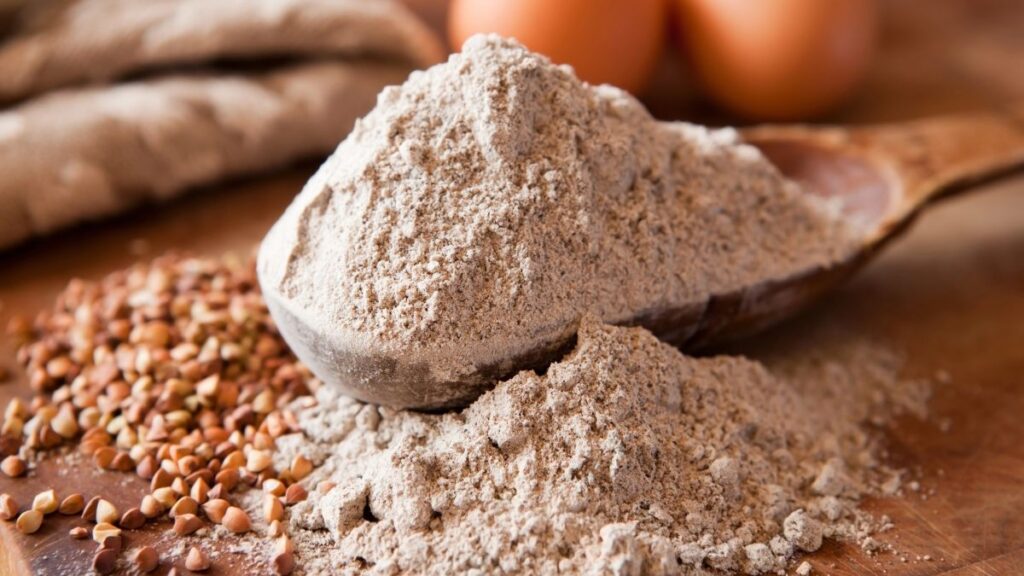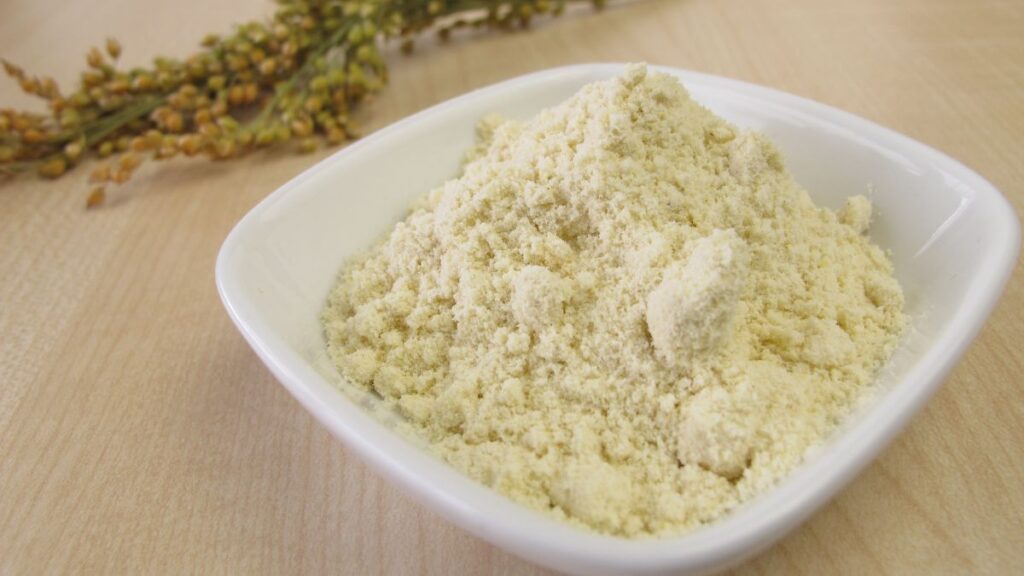16 Alternative Grains Transforming Modern Baking
Traditional baking has long relied on wheat flour as its main ingredient. However, a growing interest in diverse flavors, nutritional benefits, and gluten-free options has brought alternative grains into the spotlight.
These grains not only expand the possibilities of baking but also cater to different dietary needs and preferences. From adding rich textures to boosting protein content, alternative grains are reshaping how we think about baked goods. Below are 16 exciting grains that are transforming modern baking and what makes them so special.
Almond Flour

Almond flour is made from finely ground blanched almonds and is a popular gluten-free option. It has a naturally sweet and nutty flavor, making it ideal for cookies, cakes, and pastries. Almond flour is also rich in healthy fats, vitamin E, and protein, adding nutritional value to baked goods.
Because it lacks gluten, it doesn’t provide the same structure as wheat flour, so it’s often combined with other flours. It works especially well in dense baked items, like brownies or macarons. Its low carbohydrate content also makes it a favorite for keto and low-carb diets.
Coconut Flour

Coconut flour is made from dried, ground coconut meat and has a mildly sweet flavor. It is highly absorbent, so recipes using coconut flour require much less flour and more liquid than traditional recipes. Coconut flour is gluten-free, high in fiber, and low in carbohydrates, making it suitable for many special diets.
It works best in moist baked goods, such as muffins, pancakes, and quick breads. However, its unique properties can make it tricky for beginners to use without adjustments to recipes. Pairing coconut flour with eggs or other binders helps achieve a better texture in baked items.
Buckwheat Flour

Despite its name, buckwheat is not related to wheat and is naturally gluten-free. Buckwheat flour has a bold, earthy flavor that pairs well with hearty baked goods like pancakes, waffles, and rustic breads. It’s also rich in fiber, antioxidants, and minerals like magnesium.
When used in baking, buckwheat adds a dense, moist texture and a slightly nutty taste. It works best when blended with other flours to balance its strong flavor. Buckwheat flour is a favorite in traditional recipes for crepes and soba noodles.
Oat Flour

Oat flour is made from finely ground oats and has a mild, slightly sweet flavor. It’s naturally gluten-free when certified as such, making it a great option for those avoiding gluten. Oat flour is high in fiber and beta-glucans, which are good for heart health.
It adds moisture and softness to baked goods like muffins, cookies, and bread. Since it doesn’t have gluten, it benefits from being combined with other flours for better structure. Oat flour is easy to make at home by blending rolled oats in a food processor.
Quinoa Flour

Quinoa flour is made from ground quinoa seeds and is packed with protein and essential amino acids. It has a mild, nutty flavor that works well in both sweet and savory recipes. This flour is gluten-free and nutrient-dense, making it a great choice for healthier baking.
It’s particularly good in brownies, cookies, and quick breads. Because of its strong taste, quinoa flour is often used in combination with other flours. Toasting quinoa flour before use can mellow its flavor for those who find it overpowering.
Sorghum Flour

Sorghum flour is a gluten-free grain with a mild, slightly sweet flavor. It’s a good source of protein, fiber, and antioxidants, making it a nutritious option for baking. Sorghum works well in cookies, pancakes, and flatbreads, adding a soft texture to baked goods.
It’s commonly used in gluten-free flour blends to improve consistency. This versatile grain can also replace wheat flour in recipes when used in combination with binders. Sorghum is a staple in many global cuisines, including Indian and African dishes.
Teff Flour

Teff is a tiny, nutrient-rich grain that is a staple in Ethiopian cuisine. It has a slightly sweet, earthy flavor and is high in iron, calcium, and protein. Teff flour works well in hearty baked goods like breads, muffins, and pancakes.
It’s naturally gluten-free, making it a great option for gluten-intolerant bakers. Teff is often used to make injera, a traditional Ethiopian flatbread, but it’s gaining popularity in modern recipes. Its fine texture makes it a good addition to gluten-free flour blends.
Amaranth Flour

Amaranth flour comes from an ancient grain that’s high in protein, fiber, and micronutrients like magnesium and iron. It has a nutty, slightly grassy flavor that works well in savory and sweet baked goods. Amaranth flour is gluten-free and often used in combination with other flours for better structure.
It’s great for cookies, pancakes, and flatbreads, adding a chewy texture to recipes. Amaranth also absorbs a lot of moisture, so recipes may require extra liquids. Its high nutritional content makes it a favorite among health-conscious bakers.
Rye Flour

Rye flour is a dense, slightly tangy grain that’s perfect for rustic breads. Unlike some alternative grains, rye contains a small amount of gluten, making it suitable for partially leavened breads. It adds a hearty flavor and chewy texture to baked goods.
Rye flour is also rich in fiber and has a lower glycemic index than wheat, making it a good option for those watching their blood sugar. It’s commonly used in sourdough recipes and traditional rye breads like pumpernickel. Rye’s unique taste makes it a favorite in savory baking.
Millet Flour

Millet flour is made from a small, gluten-free grain with a mild, slightly sweet flavor. It’s highly versatile and works well in both sweet and savory recipes, such as muffins, cookies, and breads. Millet flour is rich in magnesium and phosphorus, offering added nutritional benefits.
It’s best used in combination with other flours to improve the texture of baked goods. Millet can also be toasted before grinding to enhance its flavor. It’s particularly popular in gluten-free baking for its light, fluffy texture.
Spelt Flour

Spelt is an ancient grain that contains gluten but is often easier to digest than modern wheat. It has a nutty, slightly sweet flavor that enhances breads, muffins, and cookies. Spelt flour adds a soft, tender texture to baked goods, making it a popular alternative to all-purpose flour.
It’s rich in protein, fiber, and essential nutrients like manganese. Because it contains gluten, spelt can be used as a direct substitute for wheat flour in many recipes. However, it absorbs less water, so recipes may need slight adjustments.
Cassava Flour

Cassava flour is made from the root of the cassava plant and is naturally gluten-free. It has a mild, neutral flavor, making it a great substitute for wheat flour in many recipes. Cassava flour works well in cookies, cakes, and flatbreads, providing a soft, tender texture.
It’s also nut-free, making it a good option for those with allergies. Because it’s starchy, it absorbs liquids well and provides good structure in gluten-free baking. Cassava flour is often used in paleo recipes.
Chickpea Flour

Chickpea flour, also known as gram or besan flour, is made from ground chickpeas. It has a nutty flavor and is high in protein and fiber, making it a nutritious choice. Chickpea flour is commonly used in savory recipes, such as flatbreads and fritters, but it can also be used in cookies and brownies.
Its binding properties make it a good egg substitute in vegan baking. Chickpea flour works best when combined with other flours for a balanced texture. It’s a staple in many Indian and Mediterranean recipes.
Arrowroot Flour

Arrowroot flour is a starchy, gluten-free powder made from tropical plants. It’s often used as a thickener in recipes but can also be added to baking for a soft, light texture. Arrowroot flour works well in cookies, cakes, and muffins, especially when combined with other flours.
It has a neutral flavor and blends easily into recipes. Arrowroot is also a good substitute for cornstarch in recipes for those avoiding grains. Its fine texture makes it ideal for delicate baked goods.
Kamut Flour

Kamut is an ancient grain that contains gluten but is easier to digest than modern wheat. It has a buttery, nutty flavor that enhances breads, pastas, and cookies. Kamut flour is high in protein and provides a chewy texture to baked goods.
It’s often used in combination with other flours for better structure. Kamut’s natural sweetness makes it a favorite in desserts and pastries. Its rich nutritional profile makes it appealing for health-conscious bakers.
Barley Flour

Barley flour is made from ground barley and has a mild, slightly nutty flavor. It contains gluten, though less than wheat, making it suitable for partially leavened breads. Barley flour is high in fiber and beta-glucans, which support heart health.
It’s great for cookies, muffins, and crackers, adding a moist texture to recipes. Barley flour works best when mixed with other flours to improve its structure. Its subtle flavor pairs well with both sweet and savory recipes.
15 Places Where You’re Expected to Tip—But You Really Don’t Have To

Tipping has become a widespread practice in many industries, with the expectation that you’ll leave a little extra for good service. However, not every situation truly warrants a tip, even if you feel pressured to give one.
15 Places Where You’re Expected to Tip—But You Really Don’t Have To
Top 15 Things Retirees Need To Stop Putting In Their Grocery Cart To Stay Healthy

As retirees enjoy their time off, maintaining a healthy lifestyle becomes increasingly important. One key aspect is being mindful of what goes into the grocery cart. Here are many things retirees should avoid buying to support their health and well-being.
Top 15 Things Retirees Need To Stop Putting In Their Grocery Cart To Stay Healthy







